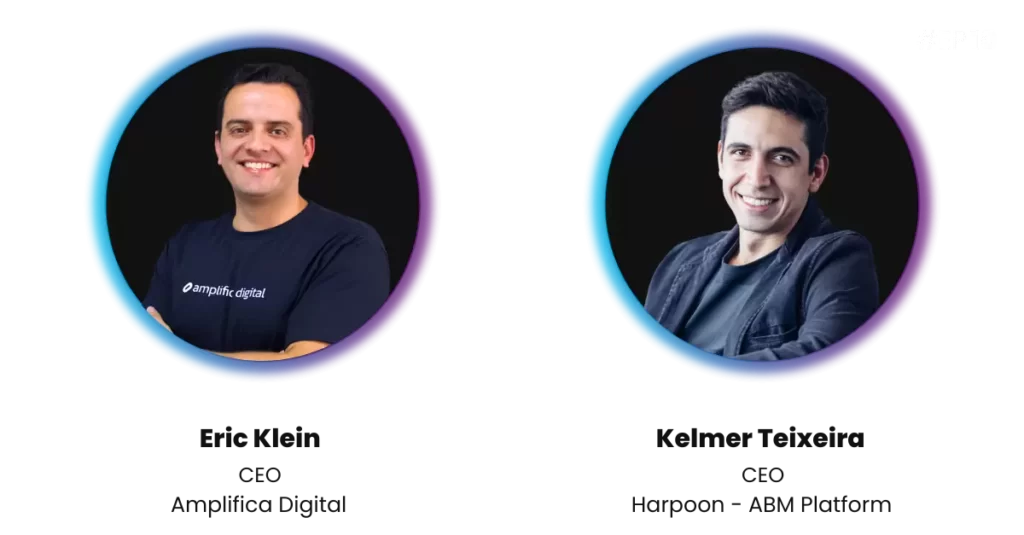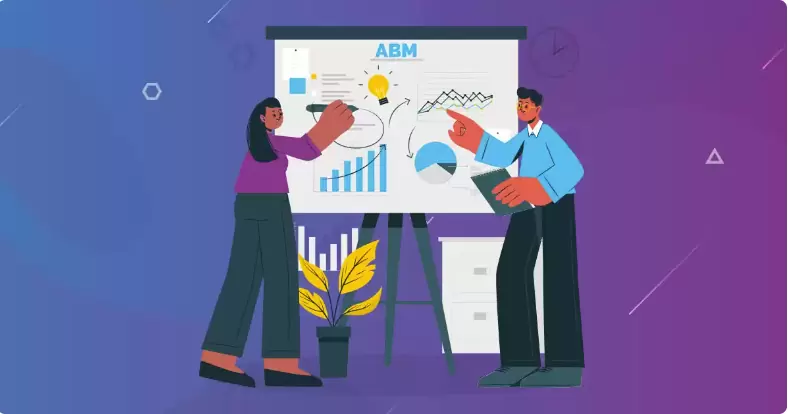In edition #10 of our #AmplificaCast we received a special guest, Kelmer Teixeira, CEO of Harpoon, to talk about strategies and tools on how to prospect large accounts and how a B2B company can benefit from these strategies.

We started our conversation by demystifying some topics with what ABM means and which platforms to use.
What is account based marketing ABM?
It's a strategy that helps companies target specific large accounts. It uses communication focused on a specific high-ticket market, among other steps, the strategy focuses on generating authority for certain accounts.
How does the ABM strategy differ from the inbound or outbound B2B strategy?
The ABM strategy encompasses both inbound and outbound characteristics with much more focus on customization, either for a specific market or cluster.
There are different types and stages. Like creating content to generate authority, mapping touchpoints, pre-sales and active prospecting.
Within the ABM strategy, when making a call to a prospect, for example, he certainly had contact, and will know who the company is through other points of contact present in the strategy.
Read more about ABM in our article: ABM: how to use it in your sales strategy

What is the main difference between an inbound marketing strategy and an account-based marketing strategy?
While in Inbound Marketing we seek to attract as many leads as possible, to convert them into materials, pages or “hand-raising” pages, within a broader process, which involves the qualification of these contacts and approach. At ABM we bring a more specific communication and consequently more adherent to the pains of the prospected company.
Within an ABM strategy, for example, there is the account discover stage, that is, a dive into the company's pains and needs to personalize communication as much as possible. This strategy undoubtedly involves a higher level of customization than outbound and inbound strategies.
A lot of people confuse doing ABM when doing inbound content strategy. Many times you even work with account-based marketing, but you can't track the performance of an account within the strategy. Hence the question:
How is ABM applied in practice?
An ABM strategy requires a certain maturity in marketing and sales. That's why we started with outbound, creating cadences, structuring a pre-sales team and SDRs, all within tools that help in the process.
Just as a B2B company works with a focus on verticals, such as pharmaceuticals, technology, automobiles, etc., the ABM strategy follows the same path. That's why it's important to think about which cases your company has from which verticals, in order to be able to impact similar verticals.
In this regard, there are three types of ABM that vary in style of customization:
- one to one
Aimed at cases where the result generated by the client is high ( LTV), but compensates for the high customer acquisition cost ( CAC) by level of customization.
- one for few
Aimed at a cluster, that is, a group of companies with similar characteristics, but still with extremely focused communication and a medium level of personalization.
- one to many
This model is closest to outbound, aimed at a specific segment, but less targeted compared to the others.
Which ABM model should your company start with?
To start a strategy and test it, everything will depend on how sure the company was about its focus, and the maturity of its team. The ideal is to start by focusing on “one for a little”, defining between 05 and 2 companies and studying the organization chart of each company in depth, finding out who the influencers are to finally start designing the strategy. Within the BXNUMXB market, whether physical or digital, the relationship is very important, the ABM strategy comes in as a medium and long-term solution.
Part of this process is very clear planning, aligned expectations, training and partners that can really help your business grow with ABM. Investment in the process is what can reduce wasted resources over time.
ABM Strategy Platforms
To decide which tool to use, it is important to have defined the type of indicators (KPI) we are looking for.
Within ABM, the platform must meet the three Rs: Relationship, Reputation and Revenue.
In Brazil, the ABM market is very little explored, until two years ago, there were no national tools to automate and connect all the data that a strategy generates. To solve this gap, the Harpoon, platform 100% focused on ABM.
With the purpose of bringing all the data together in one platform, and making it all visual, the platform has a scoring system that shows the maturity of the relationship and whether the account is ready for a trading approach.
The ABM process is divided into four major steps:
- Market research
- Definition of accounts Study of the accounts and pains of this company
- Engage and relate, for this, a platform that centralizes information.
- CRM and sales team
Harpoon helps with the customization of the fourth stage, generating personalization with the company's brand for each material and message .
To understand everything about how ABM works within a platform and all the details of this conversation, click on the image and listen to everything in full.


